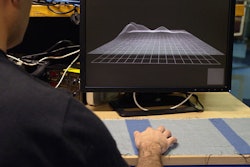In 1913, Henry Ford transformed the automotive industry with the introduction of the assembly line. By connecting all of the various tasks and processes involved in constructing a car along an automated conveyor belt, Ford was able to vastly reduce the time and effort required to make each automobile. One hundred years later, manufacturers have found powerful new efficiencies by streamlining processes in and outside of the warehouse through digital integration.
Manufacturing companies have traditionally relied on discrete systems to handle different aspects of their business. Parts, shipping, product design and sales are each managed using a solution tailor-made for each division. These different systems enabled manufacturing companies to digitize various manual tasks and take advantage of the revolution in computing, but they also created siloed organizations. The different systems couldn’t talk to each other — creating a new set of manual processes whenever each department had to get info from another one. By integrating siloed data systems, manufacturers can create a digital assembly line that stretches seamlessly from partners to the factory floor to customers.
Real-Time Digital Processes Empower Manufacturers to Accelerate Their Business
For manufacturers of physical products, digital processes can be an afterthought. However, as the pace of business continues to accelerate and people conduct more of their daily activities online, the ability to offer real-time digital processes becomes crucial. Customers, partners and internal users increasingly expect to have access to information across the organization available at their fingertips. But for many manufacturing companies, manual data requests remain the norm.
ALSO READ: Business Intelligence versus Visual Intelligence
For example, many manufacturing companies use separate systems for tracking inventory and sales. Synchronizing these records is often a manually executed process that may occur just once every few days. So when sales reps secure an order from a customer, they need to wait until the manual synchronization to find out whether the products are actually in stock, and how long it will take to get them ready for the customer. Similarly, product engineers may find that a part required by the manufacturing design isn’t available, or the measurements were incorrect, which requires cancelling a shipment and placing a new order. With manual requests between these departments, these changes could add days or weeks to the production timeline.
By digitally integrating these processes, manufacturers can cut countless hours from many of the tasks that require two departments to share information. By connecting front- and back-office solutions, the sales rep gets real-time visibility into inventory, and can tell the customer how quickly their order will be available as it’s being placed. Change orders can automatically be communicated to partner suppliers, ensuring that the correct part is shipped as soon as the product manager realizes it’s necessary. Getting a product design through approvals becomes a software-driven process rather than a string of follow-up emails and file attachments. Not only does this integration cut down on the time and effort it takes to manage these tasks manually — it also cuts down on the errors associated with manual data entry and communication between departments and partners.
We have already seen the transformational power of connected manufacturing processes in the way that Autodesk has embraced the cloud to streamline product design and assembly. As a long-time leader in manufacturing design software, Autodesk was at first reluctant to shift its focus from expansive on-premise solution suites to applications that integrated automatically with cloud-based and on-premises data from other solutions. But by partnering with cloud-based vendors like NetSuite that focus on the resource-planning end of the equation, Autodesk built connected solutions that empower its customers to speed product development lifecycles and deliver more accurate and timely pricing and change management. In fact, Autodesk has even moved to deliver some of its applications through a cloud-based Software-as-a-Service (SaaS) model. Most notably, Autodesk PLM leverages cloud integration to replace manual data requests with automatic, real-time design approval and task status updates.
Diverse New Technologies Require Rapid Integration
Although the concept of getting every part of the organization to share information digitally may seem like a relatively straightforward task, the reality is that connecting different systems and technologies will always require a flexible and forward-thinking approach. There have been technology vendors like SAP and Oracle that made attempts to unify many of these different departmental processes under a single suite of solutions, but the rapid proliferation of new technology, often delivered through the cloud, has shown that ultimately single-vendor solutions impose too many limits.
Not only does this approach cut out the opportunity to adopt the latest tools to tackle specific business problems more effectively (see how Salesforce revolutionized customer relationship management), but it also closes the door to new business models and revenue opportunities. The rapid rise of e-commerce has enabled manufacturers to sell directly to customers or retailers without the need for a dedicated sales team. But without the ability to digitally connect pricing, inventory and order data to new e-commerce platforms, manufacturers will be unable to capitalize on the opportunity. As the products they build create more data (through connected devices and the Internet of Things), manufacturers must quickly find ways to connect this information to their existing processes to take advantage of new insights.
Consider that many manufacturers are now installing connected machines that can deliver real-time information about production status. These smart machines can offer valuable alerts about potential problems or delays in the manufacturing process. However, this information is useless unless it’s connected to systems that human decision-makers can access easily. To realize the maximum value of the data generated by the Internet of Things, manufacturers need a way to expose this information in real-time, to any area of the company that needs it.
The revolution in manufacturing today will involve connecting different departments and their technologies to enable data to flow back and forth automatically wherever it is held. Manufacturers must adopt rapid, flexible integration solutions that enable business users to amplify the value of new technologies immediately. By digitally connecting processes and data across the organization, manufacturers will take Ford’s assembly line concept to its ultimate conclusion.
George Gallegos is CEO of Jitterbit.























